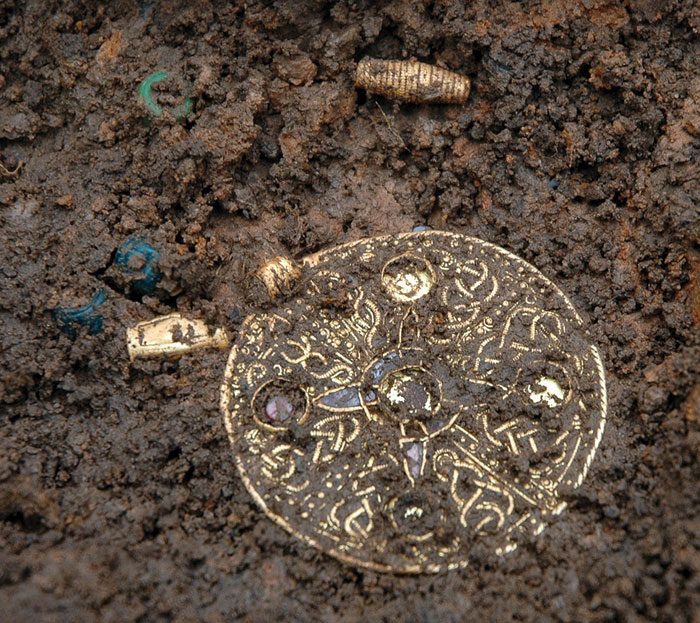
Did 'the Anglo-Saxon migrations' take place, and were Romano-British leaders replaced by those of Germanic descent? Susan Oosthuizen's new book, The Emergence of the English, is a call to rethink our interpretations of the 5th and 6th centuries AD, reflecting on whether many of the assumptions we make about the period are actually supported by evidence. Interpretations that cannot be upheld should be discarded, she says, and all viable alternative interpretations should be explored for the strongest arguments to be identified. Chris Catling reports.In the early 1970s, cherished ideas about the character of Roman Britain were systematically challenged by a generation of archaeologists who rejected the simple story they had inherited of armed conquest, rule from Rome, and the conversion of primitive Celts - dressed in nothing but woad and a torque - into Latin-speaking, bath-addicted, villa-dwelling Roman citizens who dined off Samian platters, drank watered-down wine, and ate food flavoured with fish sauce. Instead, they insisted that Romanisation began long before the Claudian invasion of AD 43, that it had many regional variations, and that it took many different forms over the 350-year period of Roman occupation. But they also argued that much of Britain lay outside the main sphere of Roman influence, and that life for many people in Roman Britain changed little from what they had known before - and, yes, they continued to drink beer.
The young Turks who set about challenging old paradigms did not, on the whole, follow this thinking through to the post-Roman period, however. A deep fault-line divides the study of Roman and early medieval archaeology, which is reflected in books on Roman Britain that frequently stop at AD 410 (with a ritual nod to a few outlying beacons of Romanitas, such as Wroxeter and Birdoswald). Judged by the norms of Romano-British archaeology, the post-Roman period looks like a catastrophe from which it took centuries to recover, and whose study is made frustratingly difficult because of this so-called 'cliff edge', after which we lack dateable mass-produced pottery and coinage.
Comment: There is certainly evidence of a catastrophe: 536 AD: Plague, famine, drought, cold, and a mysterious fog that lasted 18 months
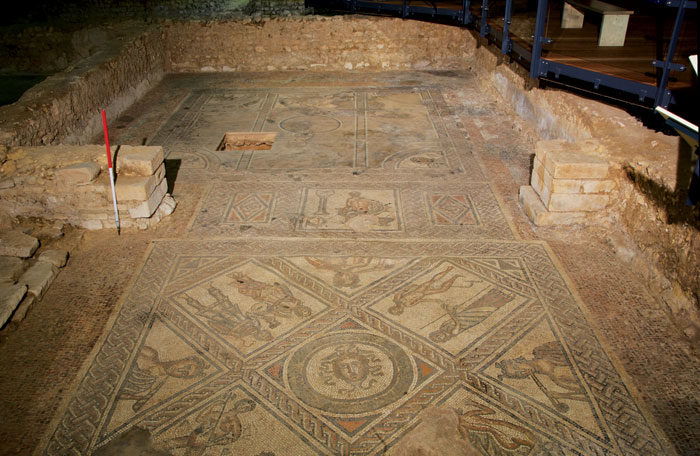
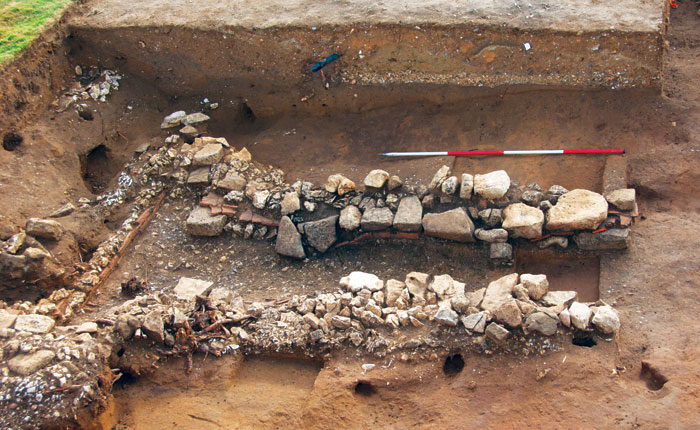
Little by little, though, evidence has begun to accumulate to demonstrate that this is far from adequate as an account of the complexities of the period. Nobody who saw the outstanding Anglo-Saxon Kingdoms exhibition at the British Library earlier this year (see CA346) could continue to believe that Britain was cut off and isolated from mainstream late antique culture. Indeed, John Blair's review of the abundance of new evidence from metal-detectorist finds and developer-funded archaeology in his book Building Anglo-Saxon England (CA343) found no evidence for economic decline. Instead, he showed that eastern England had a thriving economy based on mass-produced commodities and trade with neighbours around the North Sea basin. He also teased out different regional patterns of agriculture, settlement, building type, and trade.
In the same vein, Susan Oosthuizen's study The Anglo-Saxon Fenland (CA 332) argued that the carefully balanced systems of Fenland agriculture and the traditions of common-land management that are recorded in later medieval documents must represent continuity, evolution, and adaptation rather than upheaval, with no environmental evidence for the rewilding of the Fens from scrub and tree growth or from the neglect of drainage systems.
She went further and suggested that there is little evidence for the idea that Britain was a land of warring gang leaders, with proto-kings fighting each other for territory and supported by loyal kin and retainers. Although territorial names from the period do sometimes include personal names, most are based on topography and suggest that people identified not so much with a leader as with the land they inherited, inhabited, and cultivated, and over which they exercised individual and collective property rights. It looked to her as if most of Britain's population, descended from earlier inhabitants, continued to farm the same landscapes in much the same ways as their ancestors had done over preceding centuries.
Comment: On Britain's place names:
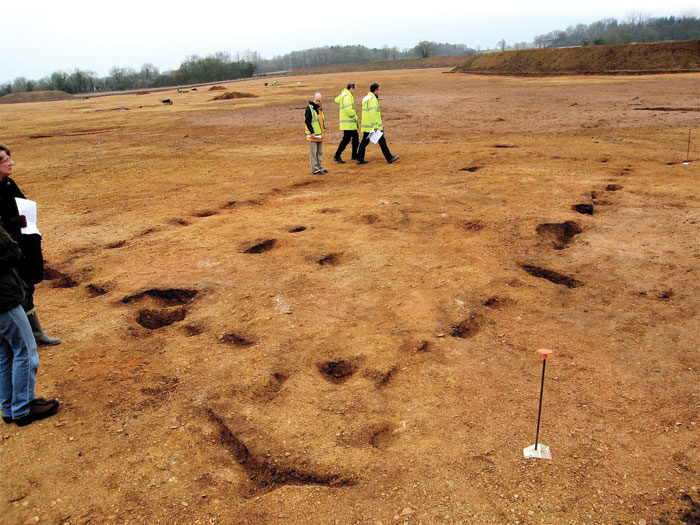
Susan Oosthuizen has now returned to the topic with a short but punchy polemic (The Emergence of the English), arguing that much of what we think we know about the Anglo-Saxon period is based on too many unfounded assumptions about the period - in particular that there was substantive north-west European immigration, that Germanic leaders replaced the late Romano-British elite, and that material culture and linguistic changes are necessarily evidence of either. To make progress in understanding this period, she argues, we need to re-evaluate these premises in order to establish their solidity. If they cannot be substantiated, they should be rejected. And if more than one interpretation of the evidence is possible, all should be tested in order to find the one that most robustly fits the available data.
Her alternative proposition is that there is sufficient evidence to suggest that 5th- and 6th-century Britain evolved through a process of adaptation and innovation from a late Roman base, not as a result of imported cultural practices imposed by Germanic elites on a subject people. Echoing ideas put forward by Neil Faulkner and James Gerrard, Susan argues that the withdrawal of Roman administration might initially have increased stability and have had beneficial effects, for instance, because of a reduction in the demand for tax. The widespread conversion of arable land into pasture that characterises this period is evidence of a shift from high-intensity to lower-intensity forms of agricultural production, with lower labour and capital costs - as well as a response to climate change. Farmers were able to retain a greater proportion of their own produce, and the elite were able to retain a greater proportion of the peasants' surpluses because they themselves no longer had to render a share to the state.
There is evidence from documentary sources, too, for stability and continuity. St Patrick, born and brought up in Cumbria but kidnapped and taken to Ireland as a 16-year-old slave c.AD 406, describes his Latin-named father, Calpurnius, as a Roman citizen, owner of a villa estate, and a local aristocrat of some standing - in particular, as a decurion (a member of a Roman city council with important public responsibilities) and a deacon in the Christian church. Patrick was brought up speaking vernacular Latin, and identified Britain and Christianity as Roman; in contrast with the Irish, whom he deemed barbarians and pagans. His life does not suggest that he felt insecure or that his family needed to defend themselves or the region from attack. Indeed, his reminiscences took for granted the continuity of Romanised rural life in north-west Britain in the early to mid-5th century.
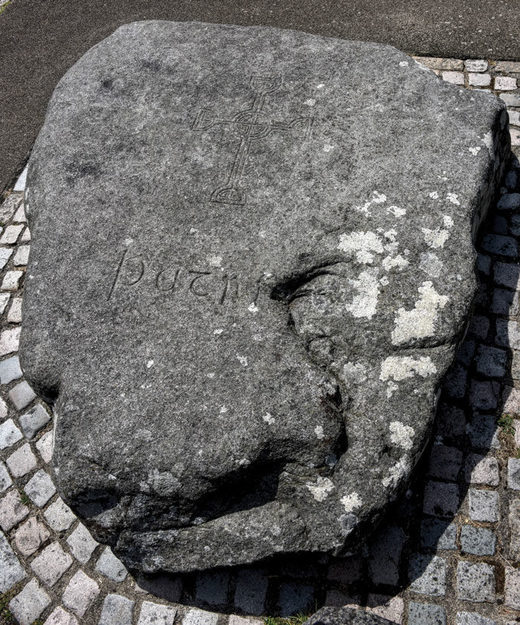
What these various narrative sources appear to show is that Romano-British institutions survived but were evolving, that the agricultural sector remained peaceful and productive, and that trade with the North Sea was growing in volume and importance. But there was also continuing close contact with the Mediterranean world and with the Church in Rome.
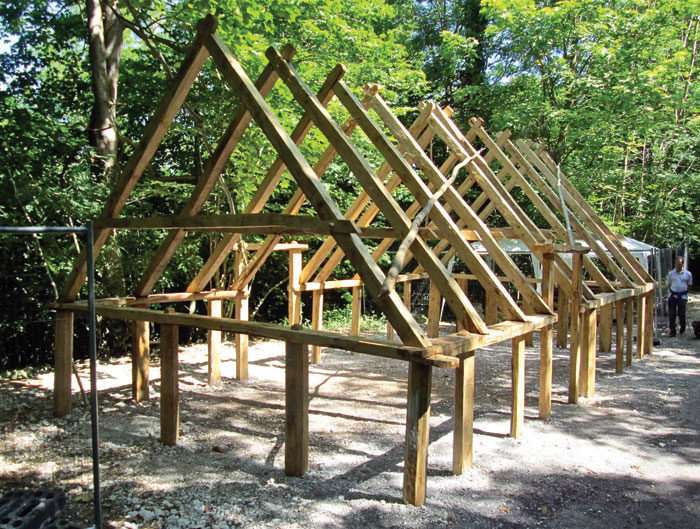
ALTERNATIVES TO THE ANGLO-SAXONS
In light of this evidence, Susan suggests that the premise underlying many interpretations of the period - in particular that cultural change in post-Roman Britain was the consequence of Germanic immigration - now seems untenable, and she argues forcefully against the use of the term 'Anglo-Saxon' to describe the period. First, because it lumps together the millions of people already living in Britain with the very much lower numbers of immigrants of diverse backgrounds - who came from North Africa, the Mediterranean, and all parts of Europe (not least from Ireland), and who cannot have brought with them one common culture or language. And second, because the term 'Anglo-Saxon' unthinkingly imposes an interpretation on the data by assuming the dominant role of Germanic migration in the emergence of post-Roman Britain, contrasting native British populations with Germanic incomers. Instead of the period's current tripartite division into early, middle, and late Anglo-Saxon, she suggests the adoption of such terms as 'late antique' (AD 400-650), 'early medieval' (AD 650-850), and 'pre-Conquest' (AD 850-1100).
Susan offers an alternative analysis based on the proposition that the stability of the agricultural economy depended on each household's rights of private property over its farmland and its rights in shared natural resources (held in common and governed by a defined number of other households), such as open pasture and woodland. If there had been a hostile or violent transformative change in land ownership between the late 4th and late 8th centuries, you might expect that to be reflected in changes to the agricultural landscape, such as the overwriting of existing field layouts with new fieldscapes, cutting across the grain of the older systems. Without assimilation or integration, old and new might appear as two different morphological forms side by side. Could incomers simply take over from existing owners, adopting their homesteads and field systems wholesale? That would require an almost instantaneous transfer to strangers - who probably spoke a different language - of boundaries defining property rights and the subtle knowledge of the locality necessary to manage soils, topography, drainage, and access for successful pastoral or arable farming.
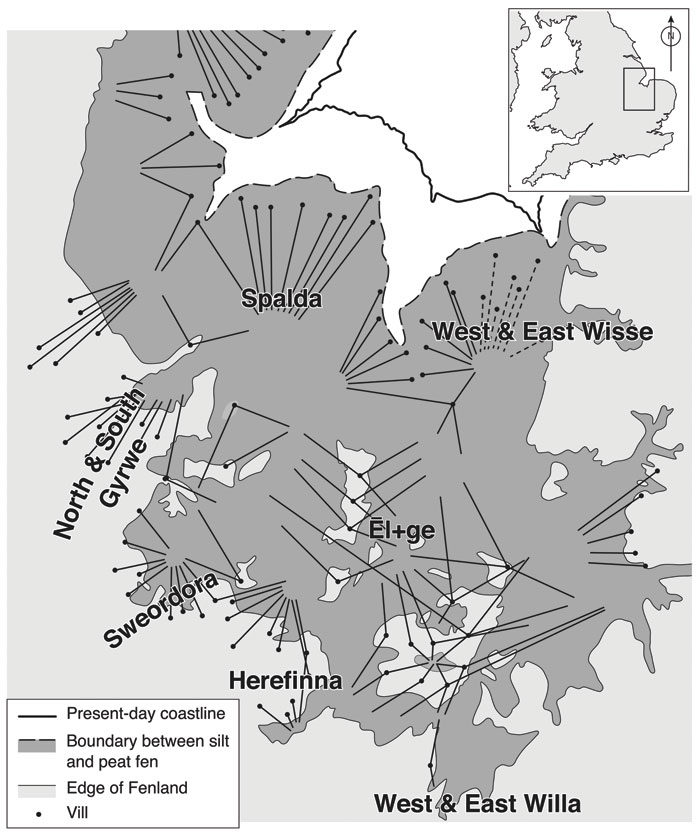
No matter what the political conditions, the day-to-day preoccupation of most people throughout history has had to be focused on generating a sufficient volume of food and other goods to support their households from one day to the next. Leaders and territorial names come and go, but farming and food production depend on persistence and repetition as well as the ability to reproduce the same crops over and over again. Interruption could be catastrophic - a household that neglects to plough, sow, and harvest, as well as manage its flocks and herds, might not survive to try again next year. Life depended on stability and long-term maintenance of the environment.
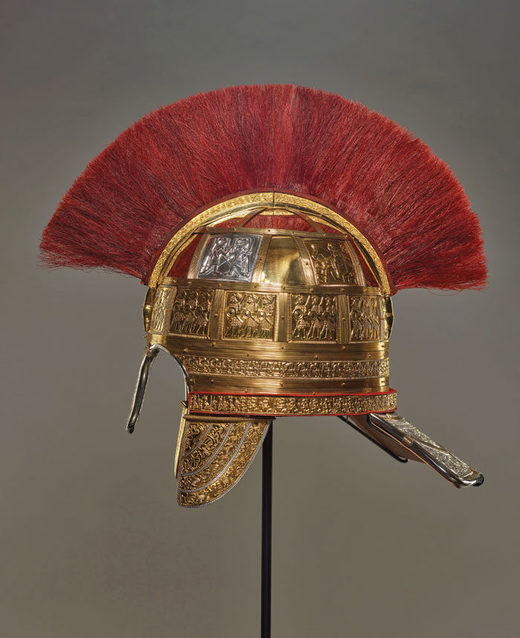
Also frequently quoted as evidence of domination by migrants rather than assimilation is the emergence of the English language. Models to explain this have so far depended on the idea that Old English was imposed by ruling Germanic elites, that speaking Old English was a basic requirement for career progression, and that Old English speakers enjoyed a privileged position under the law. Not only is there no evidence to support such models, but there was no group of people - dominant or otherwise - who brought English to Britain as a ready-formed language. Unlike the close-knit group of Normans who conquered England in 1066 and who all spoke the same language, the 5th- to 7th- century migrants spoke many different languages and dialects.
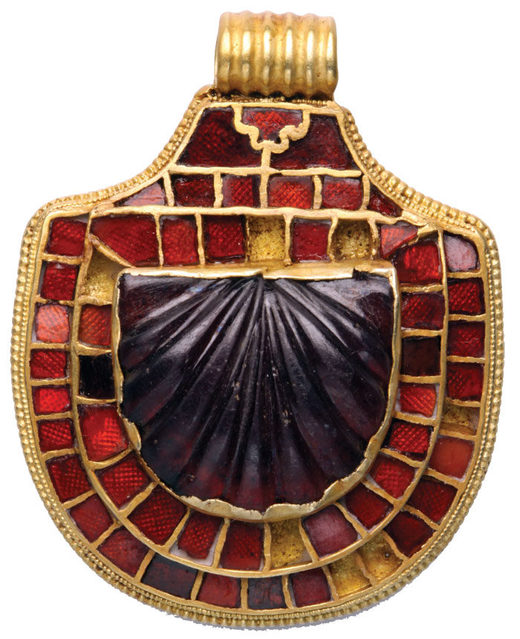
INTERPRETING IKEA
To understand this period better, Susan Oosthuizen argues for an approach that distinguishes between historical processes that took place over the short-, medium-, and long-term, and the complex intersections between the three (see the figure below).
This image depicts C. S. Holling's model of environmental resilience adapted for interpreting change in post-Roman England. It shows how the interaction of continuities and long-term changes with faster events is seen as new social and cultural expressions
Fast changes - some with temporary effects, others with medium- or longer-term consequences - might include the withdrawal of the Roman administration and army, the Justinian plagues, and attacks from Picts, Scots, and 'Saxons'. Meanwhile, change across the medium term is most visible in the evolution of Romano-British institutions (such as the judiciary, army, and church), in the languages of Roman Britain, and in the conversion of arable land into pasture in the face of climatic decline and changing economic demand.
Slow adaptation to new conditions might be represented by the agricultural economy, by traditions of common property rights in woodland, pasture, and other natural resources, by their collective governance, and by the social relations both imply. Assumptions of what it meant to be 'Roman', and traditions of craftsmanship and aesthetic sensibility, may also have been transformed slowly.
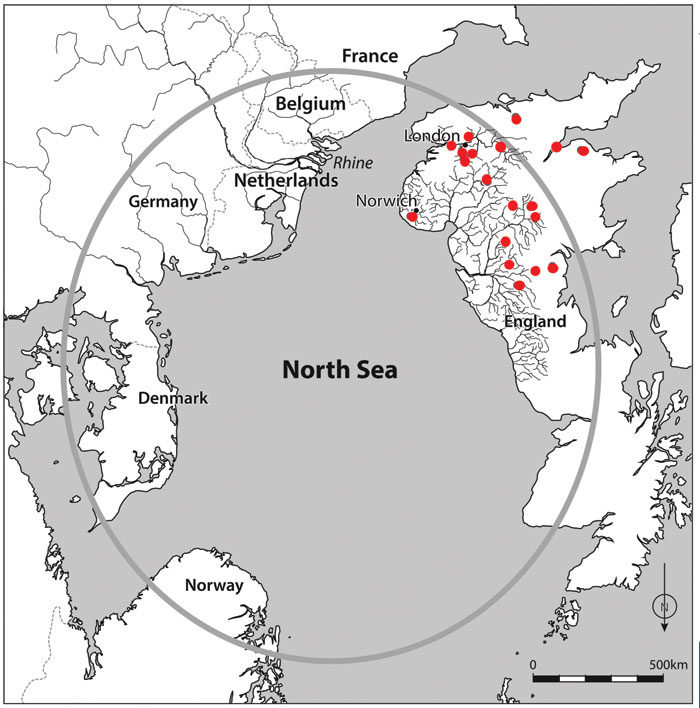
Further reading
Susan Oosthuizen, The Emergence of the English, Arc Humanities Press, ISBN 978-1641891271, £16.95.
This article appeared in issue 355 of Current Archaeology. To find out more about subscribing to the magazine, click here.
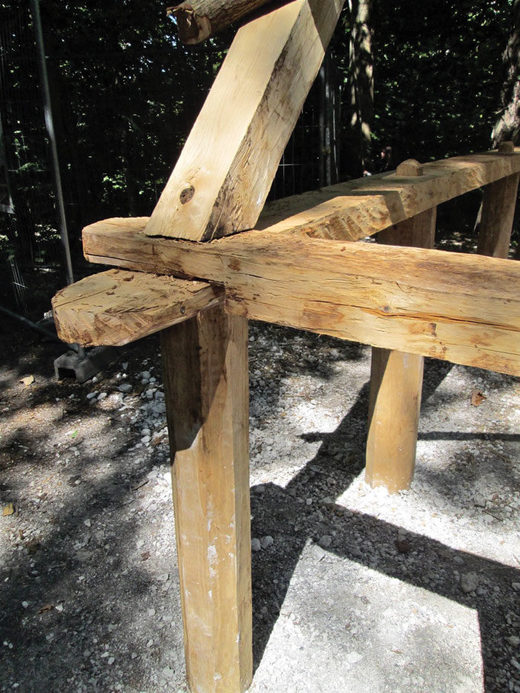
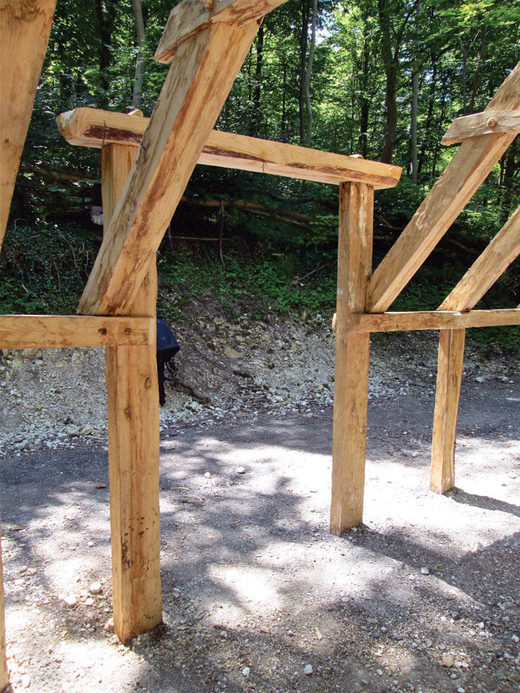
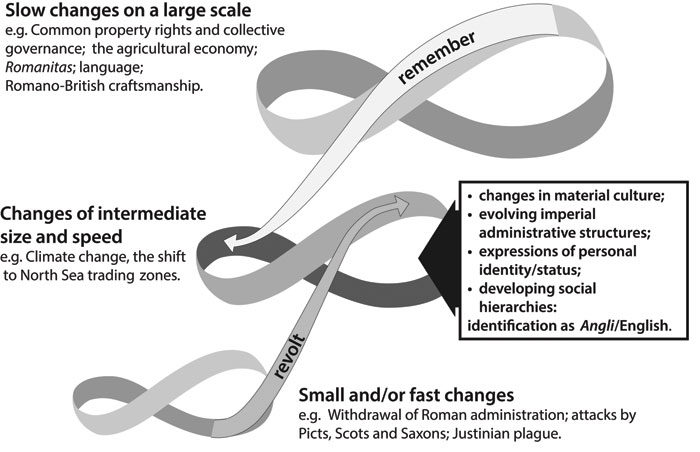



Comment: Laura Knight-Jadczyk in Meteorites, Asteroids, and Comets: Damages, Disasters, Injuries, Deaths, and Very Close Calls writes: See also:
- Student's gold pendant find is worth £145,000 and 'rewrites' Anglo Saxon history
- Oxford University genetic study finds Britons still live in 7th century tribal kingdoms
- Viking city: Excavation reveals urban pioneers not violent raiders
- Middle Ages weren't 'dark', it was an enlightened era - British Library expert
- Did an Asteroid Strike in Australia Plunge Anglo-Saxon England into a Mini Ice-Age?
And check out SOTT radio's: